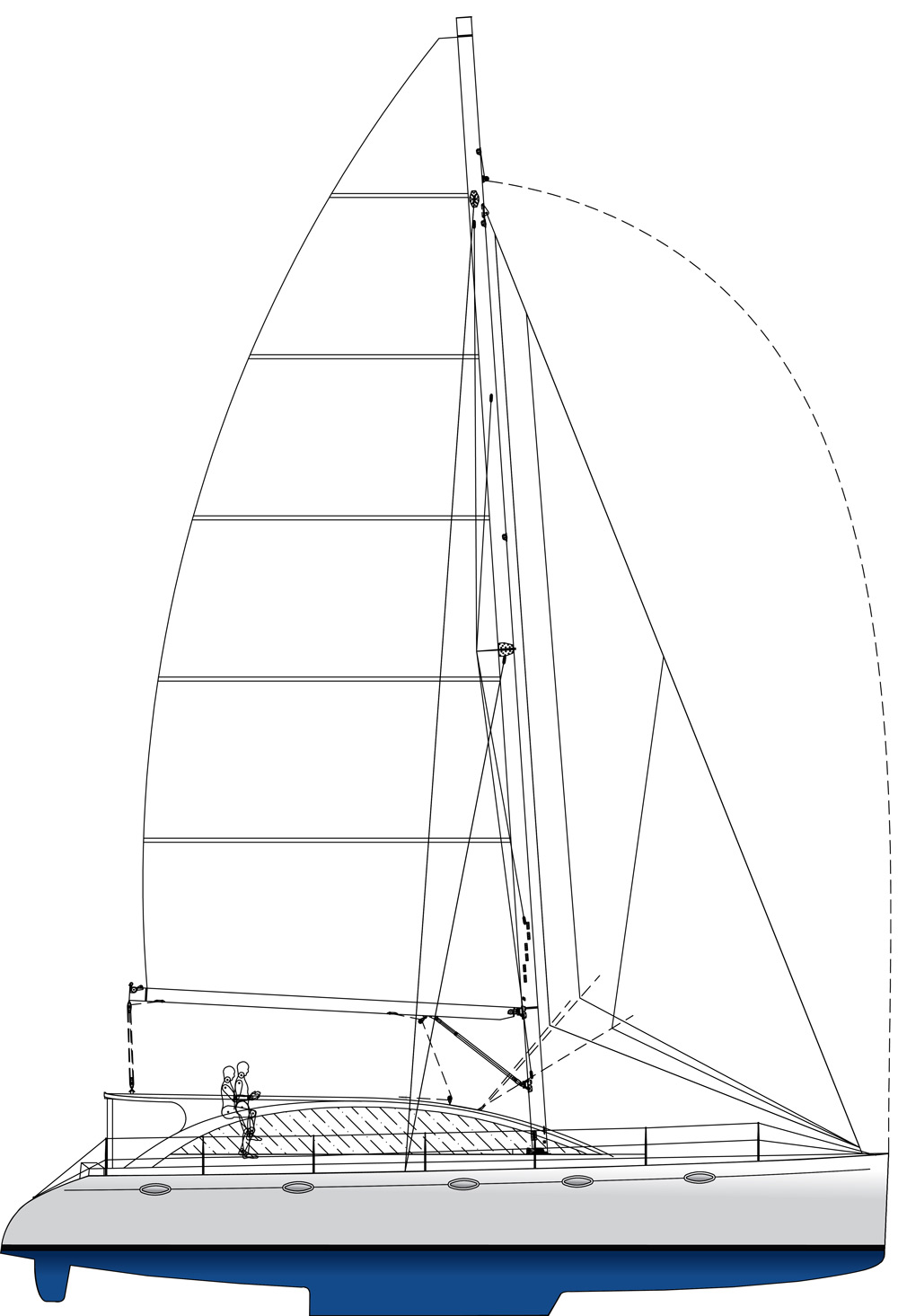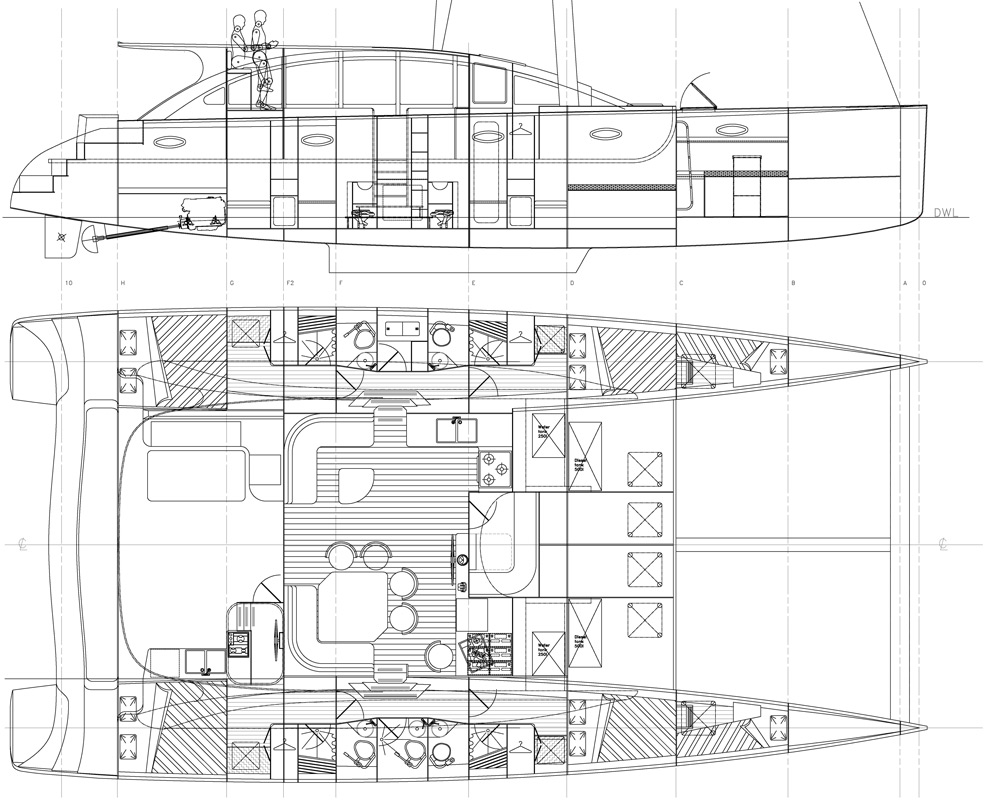DH 550
With speed and comfort, this catamaran can be build built by a home builder
Here’s an unusual catamaran project from my old friend Dudley Dix. It’s unusual because the client was Phil Harvey, builder of the Gunboat cats in South Africa, Dudley’s previous home. Dudley and Phil collaborated on the design of the new 55-foot offshore cruising cat with very good results.

No point in using the beam max of a cat for the L/B. I prefer to look at the L/B of the individual hull and in this case it’s 8.42 and that’s a skinny hull. The D/L is 90. The hull form was developed using Dudley’s radius chine plywood construction method. This method of construction lends itself very well to the cat’s long and skinny hulls. There is deadrise to the hulls resulting from this construction method of joining two flat panels. But where a hard chine would be they use a radius section to eliminate the corner.
Retractable daggerboards insure good upwind speed and the ability to snuggle up to the beach when the boards are retracted. There is also the option of shoal-draft, low-aspect-ratio fin keels. I like the daggerboards. Bridgedeck clearance is critical in an offshore cat and here it is a generous 39 inches.
I have two layouts for the cat. They are quite similar. The biggest difference I can see is in how the main cabin is arranged and whether you want two heads or four heads. There are two doubleberth staterooms in each hull. I like the two head layout myself. It gives a nice big head in each hull with a shower stall.
In the main cabin there is an inside steering station, nav area, galley and a dinette to port and a seating area to starboard. There is a door forward adjacent to the steering station that gives access to a small, forward cockpit at the base of the mast. All halyards and other control lines are in the cockpit.
Dudley shows two deck plans. One has a raised flybridge of sorts to get the helmsman above the cabintop for a good view forward. The other uses that area on the house top for a solar panel array. Forward of the forward cockpit is an arced track for a self-tacking jib. The beam of the cat is perfect for this sheeting arrangement—an advantage the cat has over a monohull.
The rig is a typical catamaran rig with carbon chainplates. Cats give you the luxury of having shrouds spread out over the beam and eliminating the need for the standing backstay you see on most monohulls. With the standing backstay gone you can have all the roach you want in your mainsail. If I use I, J, E and P, I get an SA/D of 23.62. But that does not take into account the area the mainsail roach adds. If I use the actual sail area of the big mainsail I get an SA/D of 26.5.
Two dimensional drawings don’t do the aesthetics of a catamaran justice. They tend to exaggerate the bulk of the house and that never helps. The photos I have of the finished boat show a handsome boat by catamaran standards. Face it, this boat was never intended to compete with a Concordia yawl.
Dudley’s plans are well drawn and very detailed making them good for the home builder. Dudley is also a builder so he knows firsthand the help the home builder needs with drawings. This would make an ambitious project for the skilled home builder.

LOA 55; LWL 51’6”; Beam 28’7”; Draft daggerboard option 2’6” boards up, 7’2” boards down; Draft, keel option 3’4”; Sail area 1,437 sq. ft.; Water 132 gal.; Fuel 264 gal.; D/L 90; L/B 8.42; SA/D 26.5
Our best estimate of the home-built sailaway price: $350,000
Our best estimate of the professional-built sailaway price: $850,000
1340-1272 N. Great Neck Rd.
Virginia Beach, VA 23454
757-962-9273

Comments